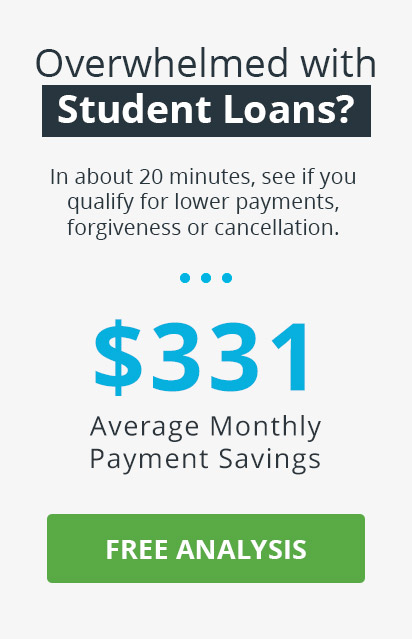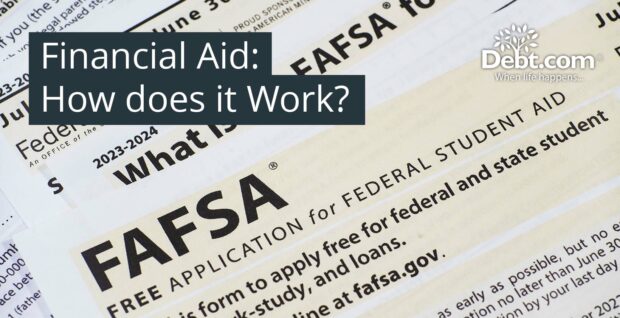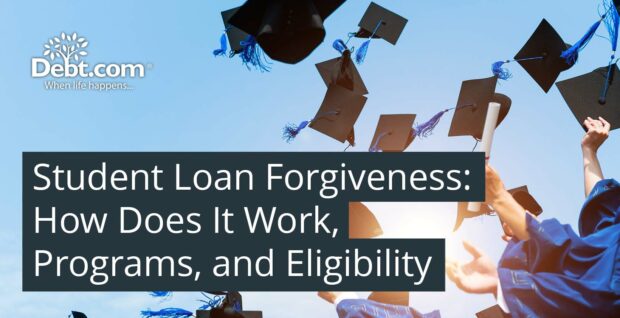
Postgraduate loans are financial aid for borrowers pursuing advanced education, such as a master’s degree. Postgraduate loans help cover tuition, living expenses, and other educational expenses. Postgraduate loans aim to make higher education more accessible by providing financial support during academic programs.
Eligibility for postgraduate loans varies depending on the type of loan. Federal loans, like Grad PLUS loans, are available to graduate students enrolled at least half-time in a qualifying program. Applicants must have no adverse credit history or use an endorser if they have credit issues. Borrowers must be at least 18, U.S. citizens or permanent residents, and have a creditworthy applicant or cosigner. Educational institutions offer institutional loans with specific requirements.
Interest rates for postgraduate loans are higher compared to undergraduate loans. Federal Grad PLUS loans have an interest rate of 9.08% for the 2024 to 2025 academic year, while Direct Unsubsidized Loans for graduates are 8.08%. Private loan rates range from 5.59% to 16.99%, depending on the borrower’s credit profile. Federal loans offer fixed rates, providing more stability, whereas private loans have fixed or variable rates, which fluctuate based on market conditions.
The benefits of postgraduate loans include simplifying loan management by consolidating multiple loans into one, offering lower monthly payments by extending repayment terms and retaining federal loan benefits such as income-driven repayment plans and loan forgiveness options. Potential drawbacks include significant financial burdens, career limitations due to the need for higher-paying jobs to manage repayments, mental health impacts from stress, and opportunity costs due to the deterrent effect of pursuing further qualifications. Interest accrues immediately after the first payment, potentially increasing the debt owed.
Postgraduate loans are a great source of financial support for advanced education, but they often come with higher interest rates and drawbacks. Masters loans and the associated masters maintenance loan options offer specific terms and benefits, which must be reviewed in detail when planning for graduate education funding.
Table of Contents
What is a Postgraduate Loan?
A Postgraduate Loan is a financial aid for borrowers pursuing postgraduate or master’s-level education. Postgraduate loans provided by governments, financial institutions, or educational organizations help cover living costs, tuition, and other expenses related to advanced education. A Postgraduate Loan aims to increase access to higher education by providing the financial means to support students during their academic careers.
What are the Eligibility Requirements for Postgraduate Loans?
The eligibility requirements for postgraduate loans depend on the type of loan and involve criteria related to academic qualifications, enrollment status, and financial conditions.
Federal Graduate PLUS Loans are available to graduate or professional students enrolled at least half-time in a qualifying program for a degree or certificate. Applicants must have no adverse credit history, such as defaults or bankruptcies. An endorser without credit problems must be used if there are credit issues. Completing the Free Application for Federal Student Aid (FAFSA) is required.
Private student loans require borrowers to be at least 18 years old (or of legal age in their state) and U.S. citizens or permanent residents. Borrowers must be enrolled at least half-time in an eligible program at an accredited institution. Lenders need a creditworthy applicant or a cosigner. There’s no FAFSA for private loans, but income and financial information are required.
Educational institutions provide institutional loans to help with financial needs. Students must be enrolled at least half-time, maintain a minimum GPA of 2.50, and demonstrate financial need, often through FAFSA. Additional criteria apply based on academic programs or institutional requirements. Terms, interest rates, and eligibility vary significantly between institutions.
Understanding these specific requirements is crucial for Getting a Student Loan to ensure eligibility and successful application.
Which Postgraduate Loan Options are Available?
Postgraduate Loan options available are listed below.
- Federal Graduate Student Loans: Federal Graduate Student Loans include Direct Unsubsidized Loans and Grad PLUS Loans. Direct Unsubsidized Loans offer up to $20,500 annually, with a total borrowing limit of $138,500, including undergraduate loans. These loans feature a fixed interest rate of 8.08% and an origination fee of 1.057% for loans disbursed between July 1, 2024, and June 30, 2025. Grad PLUS Loans cover the total cost of attendance minus other financial aid and have a higher interest rate of 9.05% and an origination fee of 4.228%. They require a credit check, and applicants with poor credit are denied.
- Private Graduate Student Loans: Private Graduate Student Loans are available from banks and credit unions and cover up to the total cost of attendance with no annual or aggregate limits. Interest rates are fixed or variable, and favorable rates require a good credit score or a cosigner.
- Specialized Postgraduate Loans: Specialized Postgraduate Loans are for advanced degrees in law and health professions. These loans provide financial support tailored to specific programs, such as nursing, pharmacy, and medical degrees.
- State-Based and Nonprofit Lenders: State-based and Nonprofit Lenders offer loans through state or nonprofit organizations. These loans include benefits such as fixed interest rates, no prepayment penalties, or interest rate reductions. They align with public-purpose missions and benefit students in certain states.
- International Student Loans: International Student Loans are for students studying abroad and do not require a U.S. citizen cosigner. These loans evaluate future income potential rather than current financial status, supporting students based on their expected academic earnings.
How do Interest Rates for Postgraduate Loans Compare to other Student Loans?
Interest rates for postgraduate loans are higher compared to other student loans, resulting in a greater financial burden for graduate students. The interest rates on federal postgraduate loans were notably higher than rates on federal undergraduate loans for the 2024 to 2025 academic year. Grad PLUS loans have an interest rate of 9.08%, higher than the 8.08% for Direct Unsubsidized loans for graduate students. Federal undergraduate loans have a rate of 6.53%.
Federal student loans feature fixed rates set annually by Congress. Undergraduate loans are 6.53%, graduate Direct Unsubsidized Loans are 8.08%, and Grad PLUS Loans are 9.08%. These rates are based on the 10-year U.S. Treasury note yield plus a fixed percentage.
Private postgraduate loans vary widely, with rates ranging from 5.59% to 16.99%, depending on the borrower’s credit profile and market conditions. A private loan have either a fixed or a variable interest rate, unlike a federal loan. Fixed rates remain consistent, while variable rates fluctuate based on market conditions, often starting lower but potentially increasing over time.
Factors influence interest rates for federal and private student loans, including the type of loan and disbursement period for federal loans and the borrower’s credit score, income, and debt-to-income ratio for private loans. Federal loans have more stable and fixed rates, while private loan rates vary based on creditworthiness, with higher credit scores generally securing lower rates. The variability in private loan rates contrasts with the consistent rates offered by federal loans.
What is the Repayment Process for Postgraduate Loans?
The repayment process for Postgraduate Loans is listed below.
- Understand the repayment period. The standard repayment period for postgraduate loans in England, Wales, and Scotland is 30 years and 25 years for Northern Ireland. It helps plan and manage repayments.
- Identify deferment options. Explore Student Loan Deferment options. Federal loans allow deferment while enrolled at least half-time, during graduate fellowships, or when receiving unemployment assistance. These options temporarily pause repayments under specific conditions.
- Engage with the loan servicer. Contact the loan servicer for help managing repayments. They advise repayment strategies and discuss options that fit the financial situation.
- Select payment options. Choose a repayment plan that suits the budget. Options include the Standard Repayment Plan, which features fixed payments over ten years, and the Graduated Repayment Plan, which starts with lower payments that increase over time. The Extended Repayment Plan allows for larger payments over 25 years, while various Income-Driven Repayment (IDR) Plans adjust payments based on income.
Are there any Forgiveness Options Available for Postgraduate Loans?
Yes, there are forgiveness options available for postgraduate loans. The Public Service Loan Forgiveness (PSLF) program is a notable option. It allows borrowers with qualified federal student loans to have their loan balance forgiven after making 120 qualifying monthly payments while working full-time for qualifying employers, such as certain non-profits or government agencies.
PSLF is only available to borrowers who have Federal Direct Loans. Direct Consolidation Loans are required for students with other federal loan types, such as Perkins Loans or Federal Family Education Loans (FFEL). Borrowers must be enrolled in a qualifying repayment plan, an income-driven plan that adjusts payments based on income.
The 120 payments do not need to be consecutive. Borrowers are allowed to switch between qualifying and non-qualifying employers, but only payments made while employed by qualifying employers count toward forgiveness. The PSLF program includes payments made during the COVID-19 payment pause.
Postgraduate loans are forgiven, with Public Service Loan Forgiveness being a key option for eligible borrowers.
What Documents are required to Apply for Postgraduate Loans?
Documents required to apply for Postgraduate Loans are listed below.
- Application Forms: Complete and submit the necessary application forms for federal or private loans. The Free Application for Federal Student Aid (FAFSA) is the application for federal student aid. Lenders provide specific application forms for private loans.
- Proof of Identity: Provide a Social Security Number (SSN) or government-issued ID. An alien registration number is required for non-citizens applying for federal loans.
- Financial Documents: Submit recent federal income tax returns, W-2s, and other income records. It includes untaxed income records, such as child support or veteran benefits. Private loans include pay stubs, tax returns, and proof of employment.
- Credit History: Provide a credit report, which lenders pull themselves for private loans. It helps them assess creditworthiness.
- Academic Transcripts: Submit academic transcripts or proof of enrollment at an eligible institution. It applies to federal and private loans to verify academic status.
- Enrollment Verification: Private loans require proof of enrollment or acceptance as an upcoming student.
- Cosigner Information (if applicable): Cosigners for private loans provide proof of income, credit history, and identification.
- Additional Documentation: Private lenders request recent bank statements and documentation of previous loans, especially if consolidating or refinancing.
How do Postgraduate Loan Terms vary by Lender?
Postgraduate loan terms vary by lender, reflecting differences in interest rates, repayment options, fees, borrowing limits, special features, and credit requirements.
The interest rate for federal postgraduate loans is standardized, with Direct Unsubsidized Loans at 8.08% and Grad PLUS Loans at 9.05% for the 2024 to 2025 academic year. Private lenders offer rates ranging from about 5.13% to 16.36%, depending on the borrower’s credit history and the lender.
Federal loans have a repayment term of 10 years, while private lenders offer more flexible terms, from 5 to 20 years, allowing borrowers to select options that suit their financial situations.
Federal loans have origination fees, ranging from 1.057% for Direct Unsubsidized Loans to up to 4.228% for Grad PLUS Loans. Private lenders do not charge origination or disbursement fees, potentially reducing costs.
Borrowing limits for Federal Direct Unsubsidized Loans are $20,500 per year, with a total cap of $138,500. Private lenders allow borrowing up to the total cost of attendance, which exceeds federal limits.
Federal loans offer better features, such as Public Service Loan Forgiveness (PSLF) eligibility and various deferment options. Private lenders do not provide these benefits, making federal loans more attractive for borrowers seeking forgiveness or financial relief.
Federal loans do not require a credit check for Direct Unsubsidized Loans, making them more accessible. Private loans require good to excellent credit and need a creditworthy co-signer.
What are the Benefits of Federal versus Private Postgraduate Loans?
The benefits of Federal versus Private Postgraduate Loans are listed below.
- Interest Rates for Federal loans are more predictable and stable than private loans: Federal loans, such as Direct PLUS Loans, have fixed interest rates set by the government annually, with a rate of 8.05% for the 2023 to 2024 academic year. These loans are more affordable for borrowers with average or below-average credit since Direct Unsubsidized Loans do not require a credit check. Private loans offer fixed and variable rates, which start lower but increase. Rates for private loans vary widely, from 3% to over 14%, based on the borrower’s creditworthiness.
- Repayment Flexibility for Federal loans is better than for private loans: Federal loans offer various income-driven repayment plans, such as Pay As You Earn (PAYE) and Income-Based Repayment (IBR), which adjust payments based on income and family size. Options for deferment and forbearance allow borrowers to temporarily pause or reduce payments during financial hardship, with repayment periods extending up to 25 years under Extended and Graduated Repayment Plans. Private loans provide fewer options for deferment or forbearance and less flexibility in repayment terms. Private lenders offer flexible repayment periods but are less adaptable than federal ones.
- Borrower Protections for Federal loans are more comprehensive than protection for private loans: Federal Student Loans include protections like Public Service Loan Forgiveness (PSLF), which forgives the remaining balance after 120 qualifying payments with a qualifying employer. They are discharged in cases of death, total and permanent disability, or school closure and offer forgiveness under Borrower Defense to Repayment if defrauded by a school. Private loans offer fewer borrower protections, often lacking forgiveness programs. They provide some discharge options for death or disability, but these are less common and vary by lender. Private lenders offer a co-signer release after several on-time payments, though it is not guaranteed.
What are the Potential Drawbacks of Postgraduate Loans?
The potential drawbacks of postgraduate loans are listed below.
- Financial Burden: Graduate school loans are costly and impact personal finances in the long term. Much of the income goes toward repayments, delaying significant life events like buying a home or starting a family.
- Career Limitations: Repaying student loans forces graduates to choose higher-paying jobs over more fulfilling ones, reducing career options and potentially discouraging careers in public service or other meaningful fields.
- Mental Health Impact: Managing postgraduate loans increases anxiety, depression, and stress, negatively affecting overall mental health and quality of life.
- Opportunity Cost: Loan repayments deter graduates from pursuing additional qualifications or further education, limiting personal and professional growth and potentially affecting long-term earning potential.
- Interest Accumulation: Interest on postgraduate loans accrues immediately after the first payment, leading to increasing debt and borrowers paying more than the original amount if repayment is challenging.
What might happen to my postgraduate loan if I withdraw?
Your postgraduate triggers immediate and long-term implications for the loan if you withdraw from the postgraduate program. Future payments on the loan stop immediately after the withdrawal date. Any loan payments received while enrolled must be repaid, and borrowers must return any overpaid funds to avoid financial difficulties.
The loan repayment starts in April following the withdrawal, and borrowers remain responsible for these payments regardless of their withdrawal date or course completion status.
Log into the financial aid portal and submit the relevant Adjustment Form to handle loan cancellation or adjustment. Check if any adjustments result in an outstanding balance requiring immediate payment. A recalculation determines what must be returned and what must be retained.
Most loans have a six-month grace period after withdrawal, during which borrowers are not required to make payments, though interest still accrues. Review the loan details, as conditions vary.
Maintain communication with the lender after withdrawing to avoid confusion or administrative errors. Ensuring the lender understands the withdrawal status helps manage the loan effectively and prevent potential issues.
Can Postgraduate Loans be Consolidated?
Yes, postgraduate loans can be consolidated. The Federal Loan Consolidation Program allows for consolidating federal loans from undergraduate and graduate studies, simplifying debt management by combining multiple federal student loans into one.
Borrowers must apply for a Direct Consolidation Loan through the Federal Student Aid website to consolidate postgraduate loans. The process involves selecting the loans to be consolidated, which include graduate and undergraduate loans. The necessary paperwork and choosing a repayment plan are required. No applications or credit checks make the process accessible to most borrowers.
The benefits of loan consolidation for students are numerous. It simplifies budgeting by merging multiple payments into one and extending the repayment term by lowering monthly payments. Consolidation retains federal loan benefits, such as access to income-driven repayment plans and loan forgiveness options.
Consolidation lets borrowers choose repayment options. These include Income-Driven repayment plans tailored to the borrower’s financial situation, Graduated repayment with increasing payments over time, and Standard repayment spanning 10 to 30 years. The flexibility helps borrowers manage their debt while finding a plan that suits their income and lifestyle.
Can You Get Student Finance for a Masters?
Yes, you can get student finance for a master’s program. Federal loans, grants, assistantships, fellowships, and scholarships are available to support graduate education.
Students must complete the Free Application for Federal Student Aid (FAFSA) to qualify for federal aid. The application determines eligibility for federal loans such as Grad PLUS and Direct Unsubsidized Loans. Direct Unsubsidized Loans offer up to $20,500 annually with an interest rate of 8.08% for the 2024 to 2025 academic year and a lifetime borrowing cap of $138,500, including previous undergraduate loans. Grad PLUS loans, with a higher interest rate of 9.05%, cover the program’s total cost minus other aid received.
Scholarships and grants are available but not repaid and are based on merit or need. Examples include the Fulbright Program and the Teacher Education Assistance for College and Higher Education (TEACH) Grant.Graduate assistantships and fellowships provide financial support, potentially covering tuition and offering a stipend for living expenses in exchange for work such as teaching or research. These options reduce the financial burden of graduate education.









